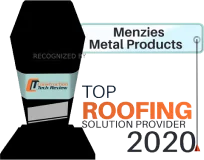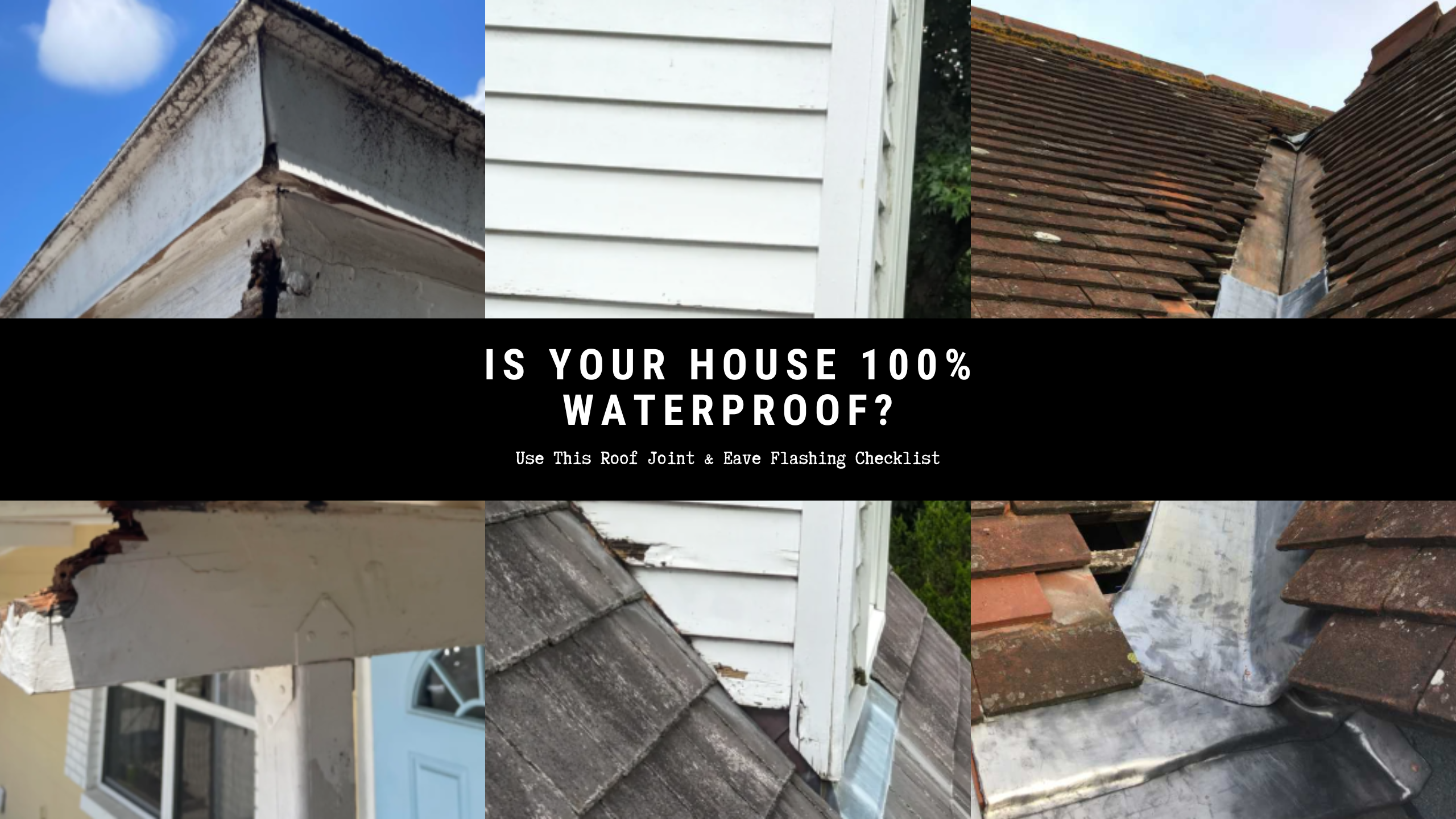
Is your House 100% Waterproof? Use This Roof Joint & Eave Flashing Checklist
Is your roof doing its job of keeping your home 100% waterproof? Often, it’s easy to spot signs of leaks (water seeping into the interior space, rotting wood, etc.), but other times, the damage can stay hidden for years. These hidden cases end up costing you the most.
To ensure your home is 100% waterproof, run your roof through this handy joint flashing checklist. Inspect five parts of the roof in particular:
- The roof eaves.
- The roof gables and sundecks.
- The roof/wall connections.
- The valleys.
- The chimneys.
#1: Your Roof Eaves
The eaves are the roof’s overhangs over the house’s exterior walls. Their main purpose is to keep the elements (rain, snow, sunlight) away from the walls, prolonging the house’s lifespan.

Photo source: www.renewallroofs.com
You’ll know your roof eaves aren’t waterproof when your fascia boards are rotting, or their paint is peeling or cracking. The damages occur due to rainwater seeping into the wood instead of running straight off the roof, a phenomenon known as capillary action.
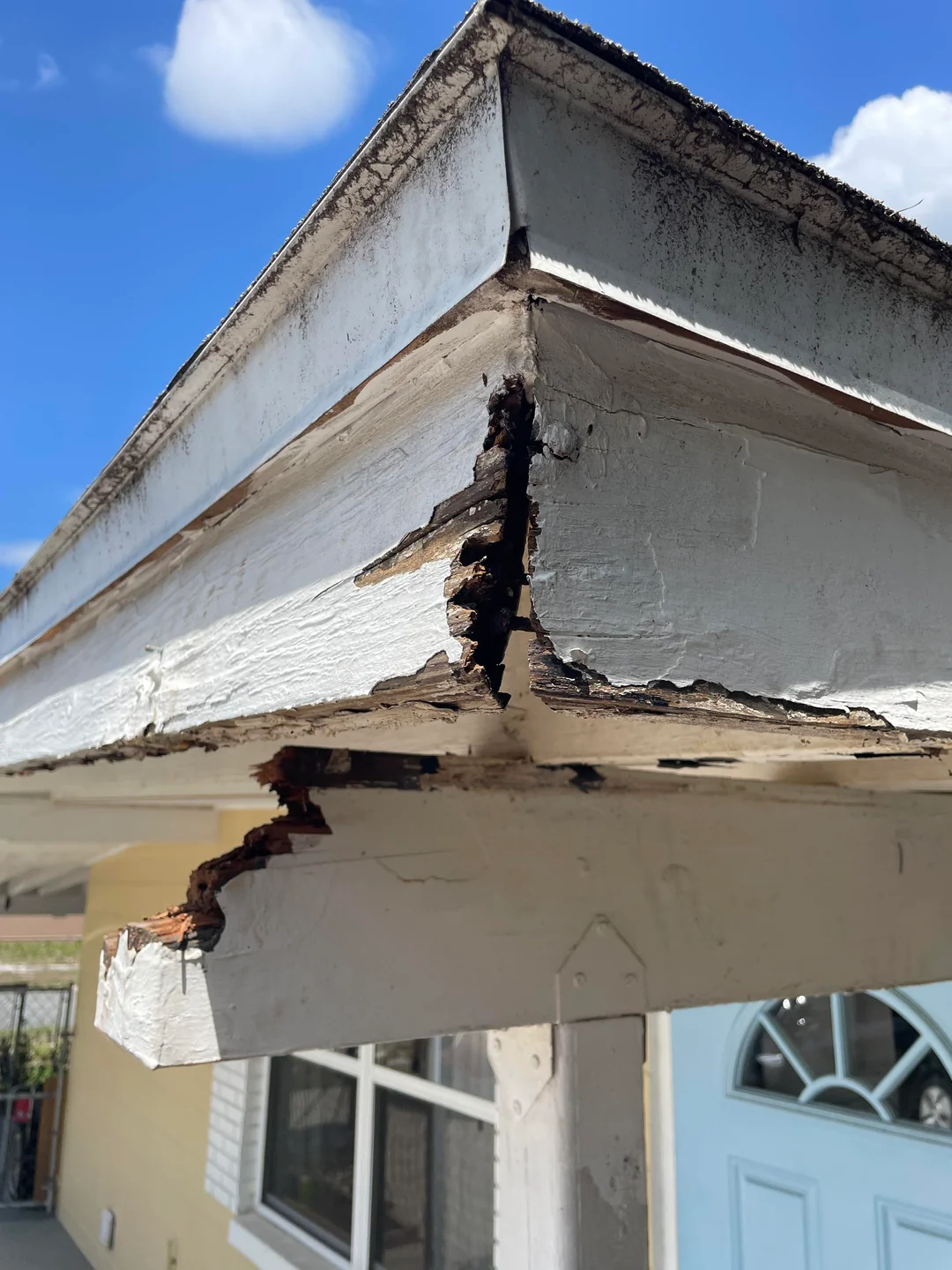
Photo source: www.reddit.com/r/howto
Capillary action occurs when the edge of the roofing shingles or sheets is flush with the drip edge and fascia board. The correct way is to install the edge of the roofing sheets or shingles a fraction of an inch over them to ensure water runs right off.
Drip edge flashings waterproof roof eaves. Drip edge flashings, also known as eave flashings, go under the edge of the roofing material and over the fascia board. They feature a little nose on its bottom, directing water safely away from the fascia board’s face.
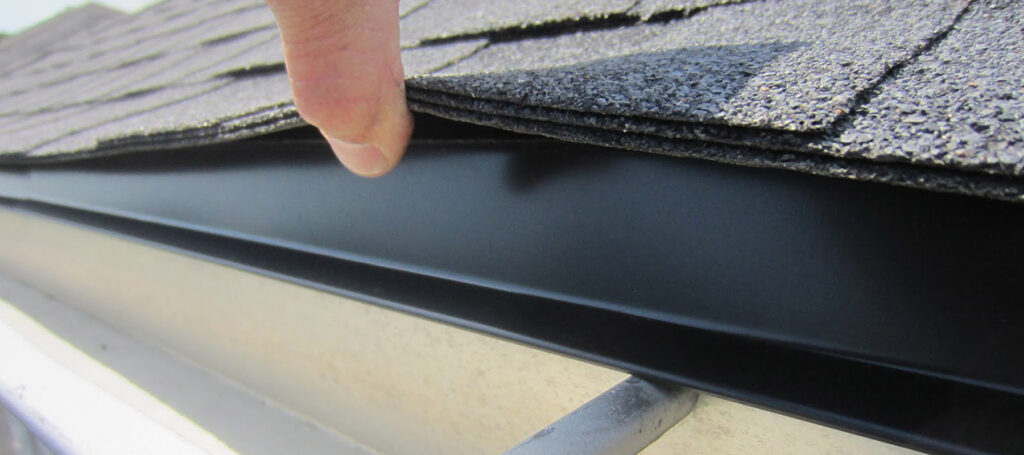
Photo source: www.iko.com
Menzies’ Eave Flashing is a reliable drip edge flashing available in 3/4″ and 1-1/2″ and various finishes, such as black, white, brown, charcoal, and galvanized. We also accommodate custom colors and sizes.
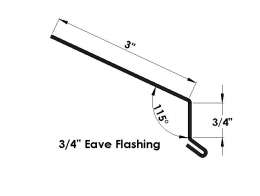
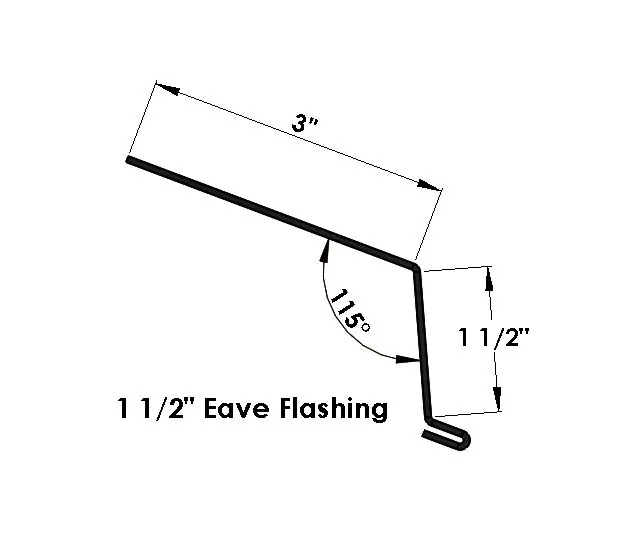
#2: Your Gable Roof Rakes / Sundeck
Roof gables are the two sloping sides of a roof that meet at the top, forming a triangle. They are one of the most common roofing structures and give any home a nice aesthetic.
The front-facing sides of the gable roof running from the eaves to the ridge are called the “roof rakes”:
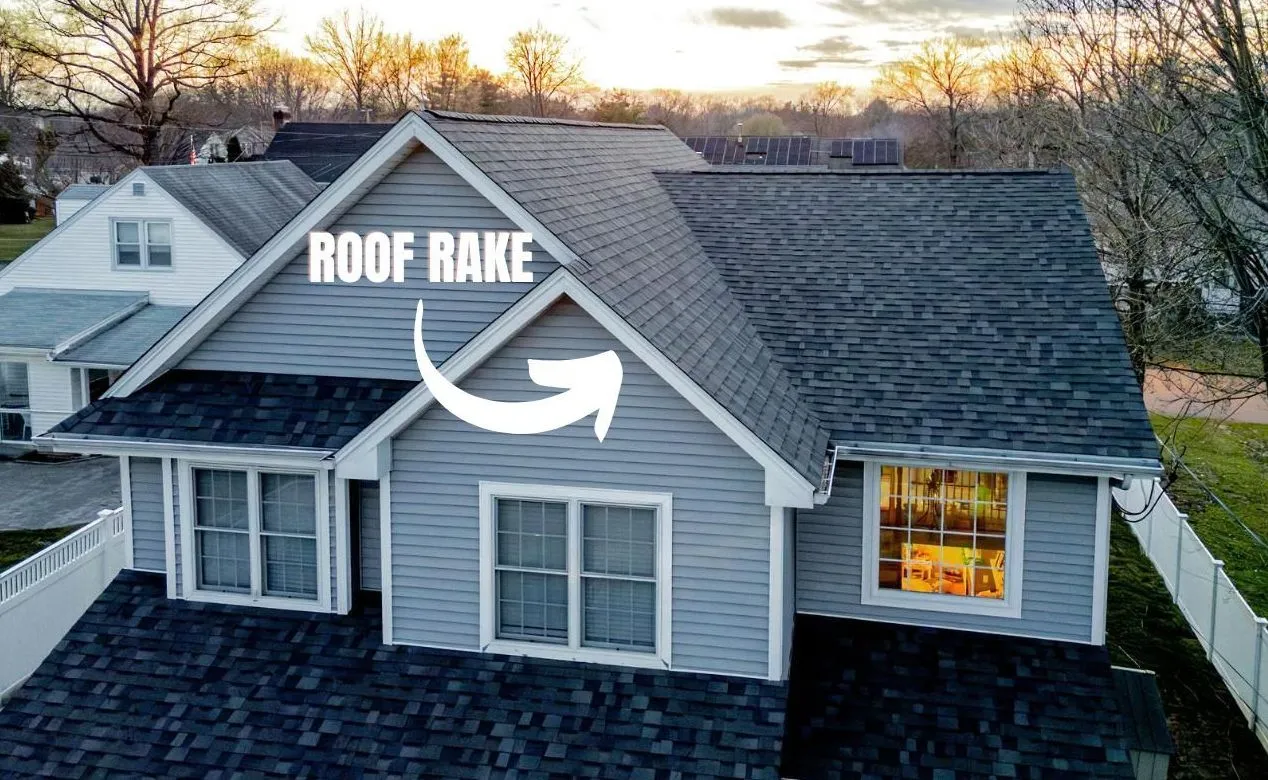
Photo source: www.a1roofproct.com
Gable flashings (sometimes called “gable rake trim”) protect the exposed faces of gable roof rakes from water damage. Gable flashings’ 90-degree profile can also protect sundecks.
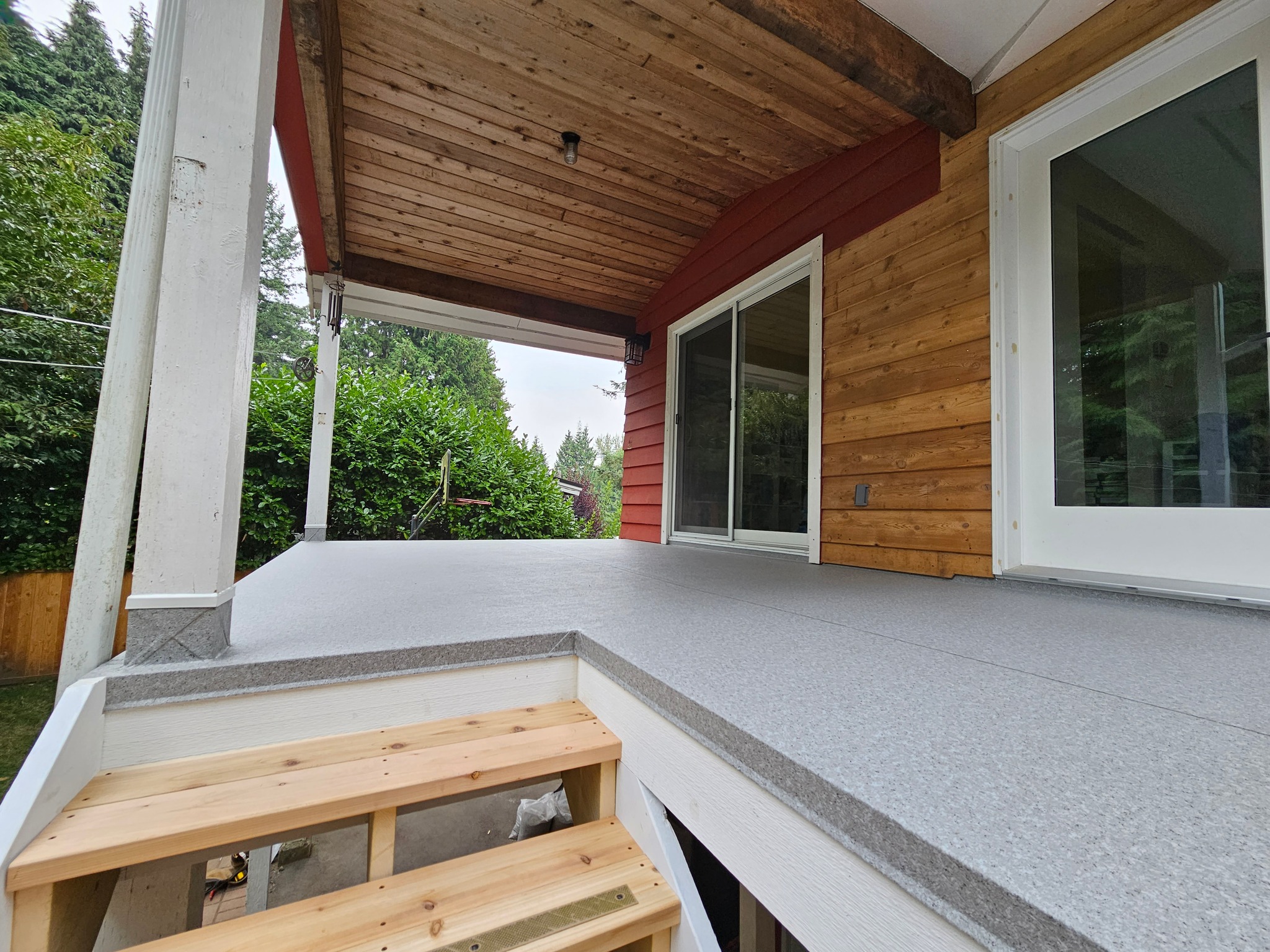
Photo source: Premier Sundecks Ltd.
Menzies’ Roof Gable/Sundeck Flashing is made of galvanized iron for easy installation and prolonged lifespan. It can be ordered in variable face lengths as needed.
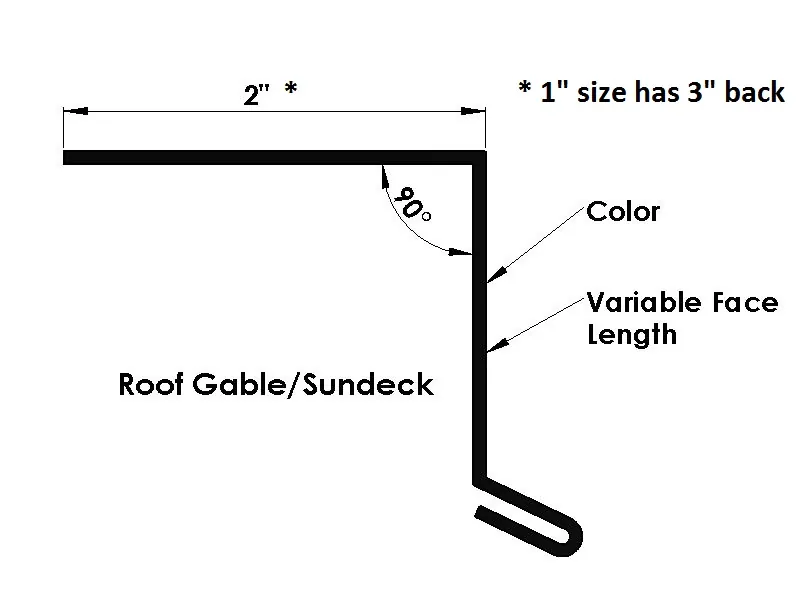
#3: Your Roof/Wall Connections
The third area of your roof to check is its connections against walls, such as dormers and parapets. Such intersections are also vulnerable to leaks, as shown in the image of an improperly flashed dormer-roof connection below:
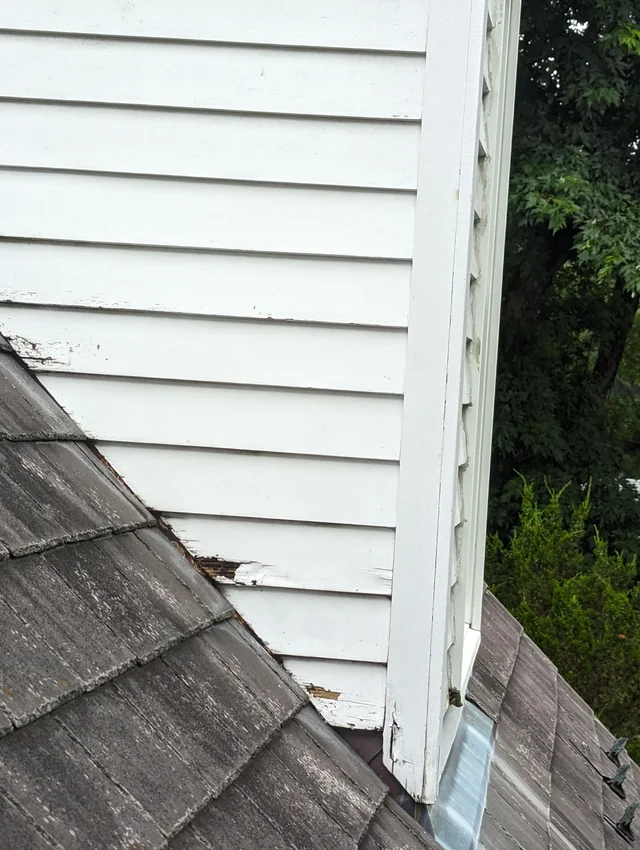
Photo source: www.reddit.com/Roofing
Properly waterproofing roof/wall connections requires flashing elements called “drip flashing.” Drip flashing directs water away from the vulnerable intersections and onto the roof slope, where it safely runs off.
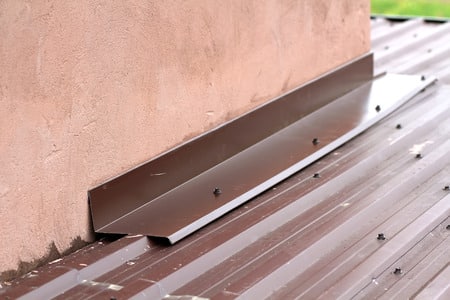
Photo source: www.roofersguild.com
(NOTE: Drip flashing differs from drip edges, which protect roof edges, not roof/wall connections.)
Drip flashings protect windows and doors from rainwater and snow. Menzies offers two drip flashing options: the Roof/Wall Flashing and the Drip Flashing Non-Return (to prevent water from getting between veneers and the building’s structure).
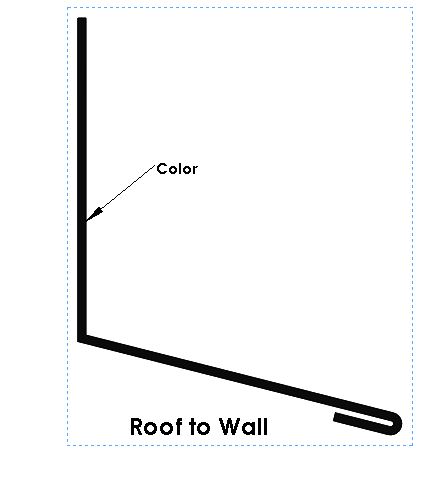
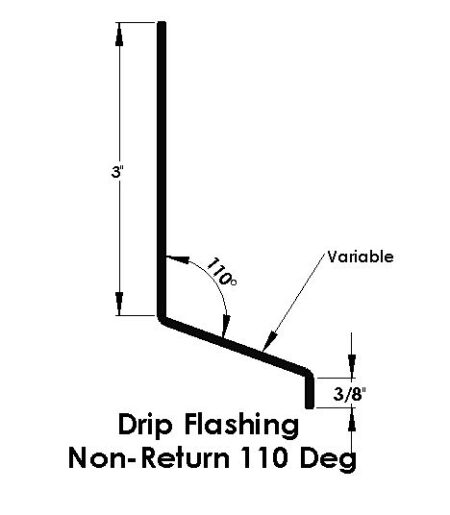
#4: Your Roof’s Valleys
Among the areas of a building vulnerable to leaks, roof valleys require special attention since they receive lots of water runoff and snow accumulation.
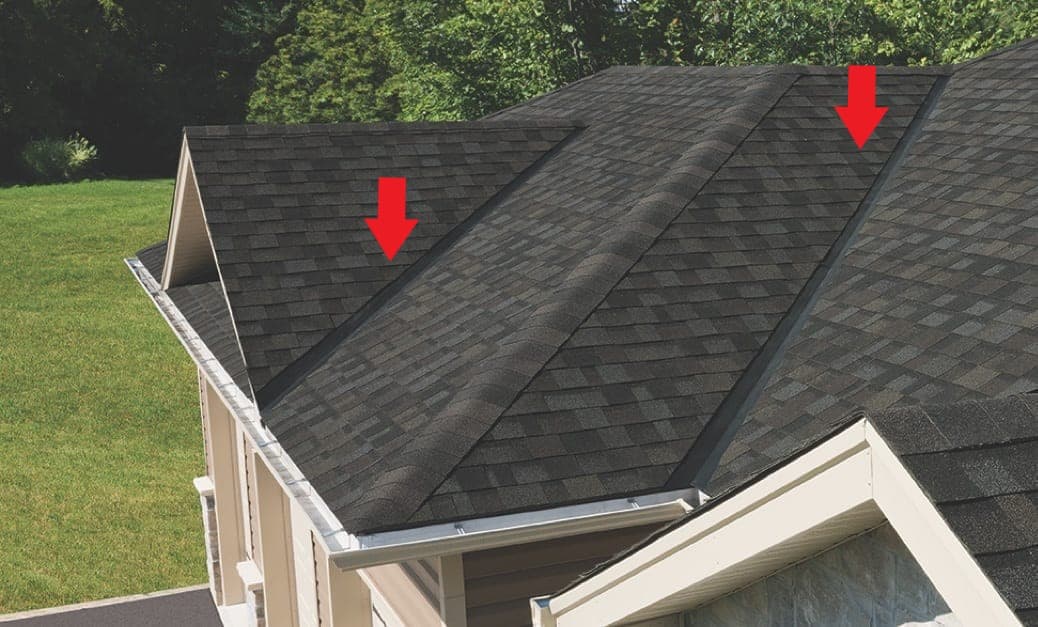
Photo source: www.sandhurstroofing.com.au
Clear signs of a leaking roof valley include holes, cracks, misplaced shingles, rust, and visible nails on the existing valley flashing.
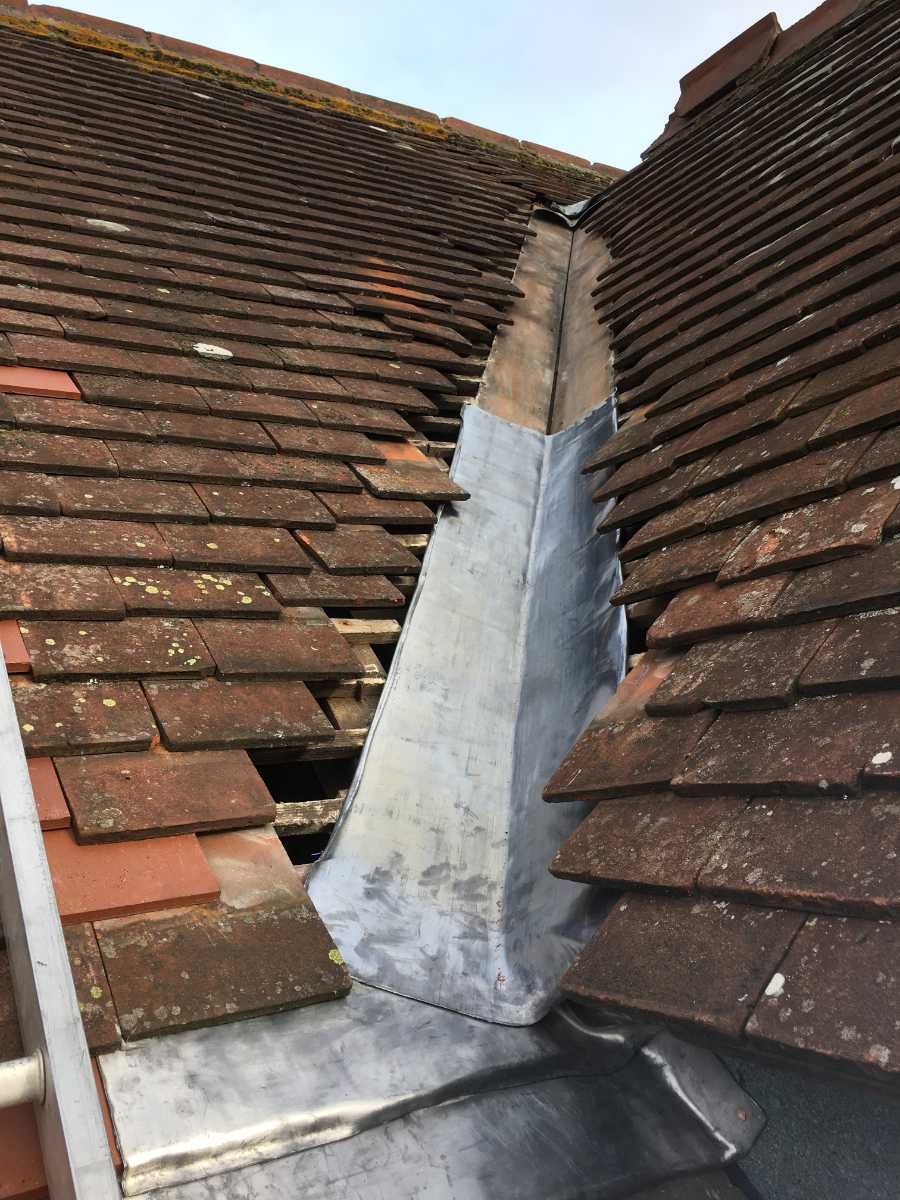
Photo source: www.henleazeroofing.com
To correctly waterproof a roof valley, nail the flashing to the roof sheathing along its edges, which will sit underneath the roofing sheets or shingles. After sealing these seams, the nail holes will pose no leakage threat. Never nail the flashing at its exposed face, such as towards the middle.
Menzies offers two types of valley flashing: W Valley Flashing and V Valley Flashing, named after the shapes of their cross sections.
W Valley flashings divide the water runoff into two channels, which lessens the stress on the flashing itself. Besides, they help channel water flow better and prevent it from splashing up under the shingles on the adjacent roof slope. W valley flashing suits situations where the roof slope is significantly steeper.
A V Valley flashing has only one channel and may be preferred for economic or aesthetic reasons.
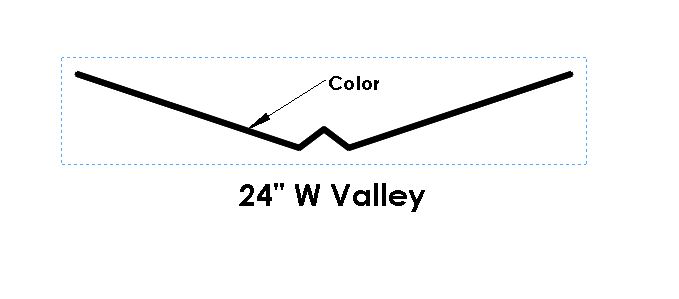
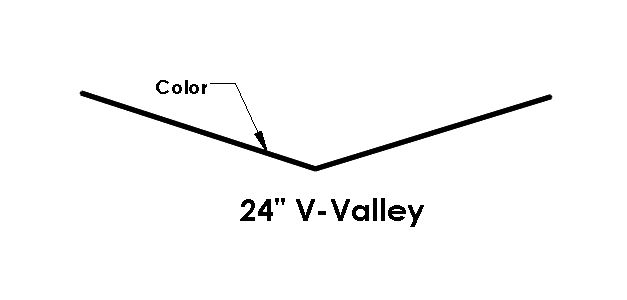
#5: The Chimneys
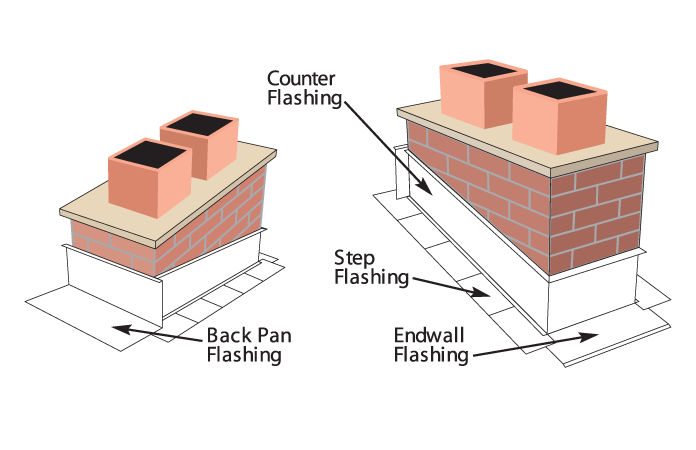
Photo source: www.agwaymetals.com
Lastly, check your chimneys, especially the upslope sides, which are the most vulnerable to water penetration. Look for flaking masonry around the intersections with the roof. Check for water in the chimney flue or a musty smell inside the house.
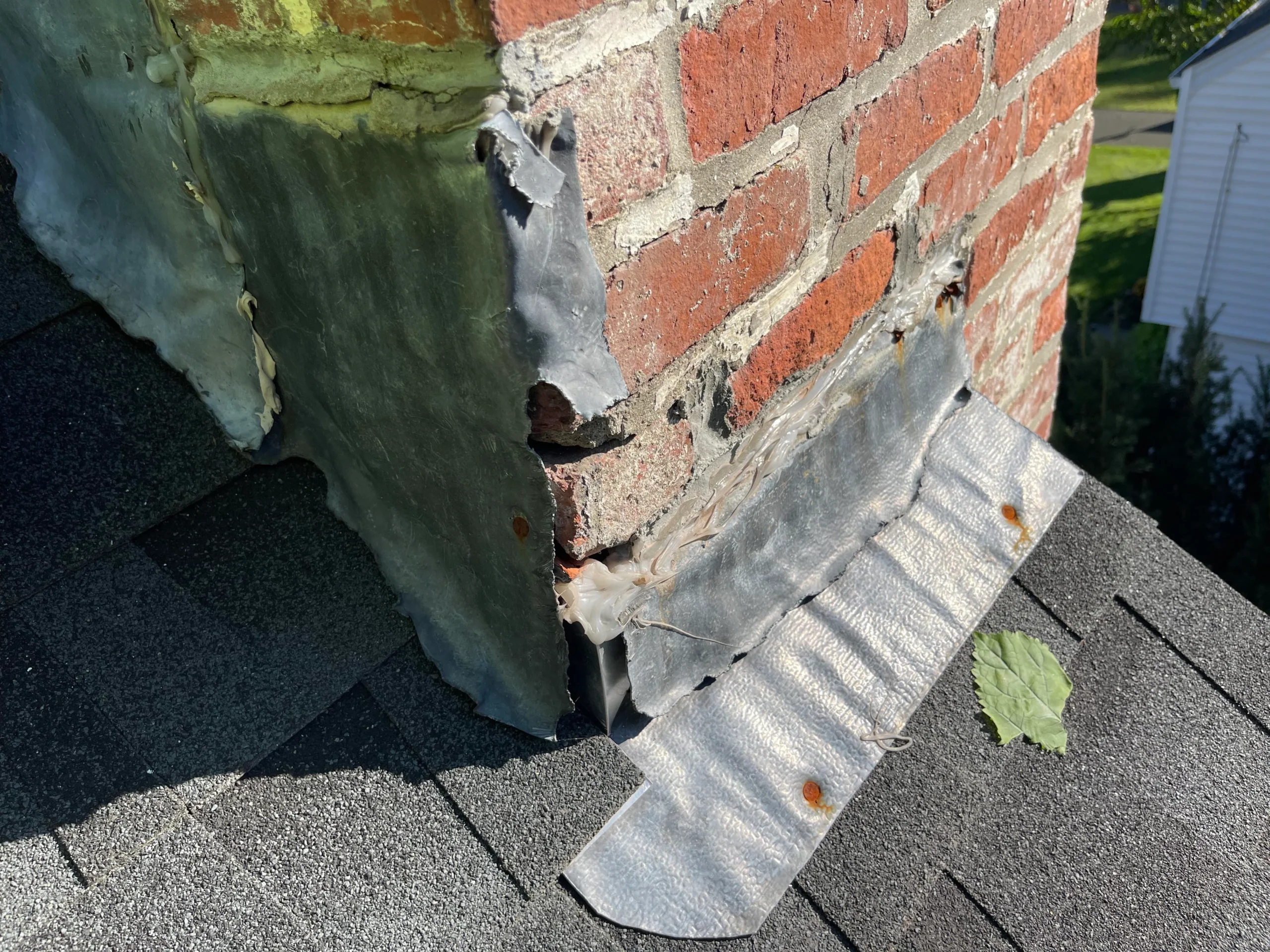
Photo source: www.reddit.com/r/Roofing
If your chimneys are unprotected (or if the existing flashing is rotting or coming apart), we recommend using these Menzies products to ensure your chimneys are 100% waterproof:
- The Chimney Backpan Flashing for each chimney’s upslope side
- The 90° Angle Flashing for the downslope and lateral sides
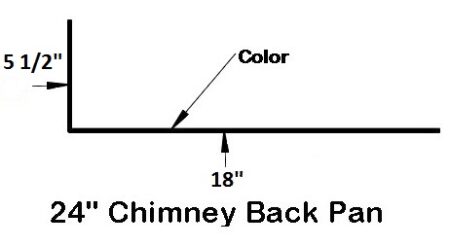
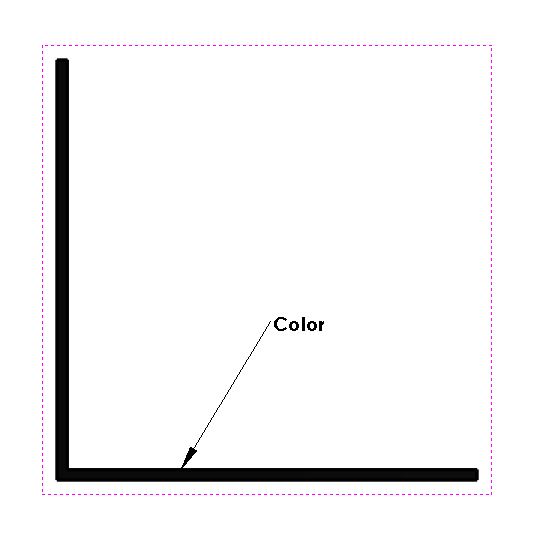
Lastly, make sure you seal your flashing materials into place with top-quality sealants, like Menzies’ TITEBOND WeatherMaster Metal Roof Sealant.
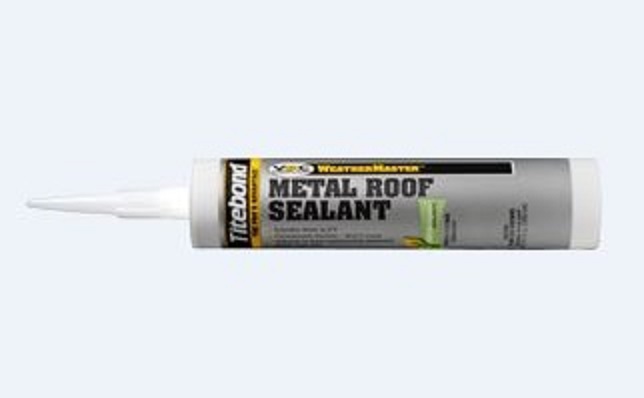
(NOTE: Do you need to flash roof stacks on your home, such as its plumbing stacks and gas vents? We covered roof stack flashing, roof utilities flashing, and roof vents in their own articles.)
Protect Every Corner of Your Roof With Flashing Materials by Menzies
Joints and edges around your roof increase the chance of leaks more than other roof penetrations. Once you use our guide to find everything that needs replacement, head to the Menzies product section to get it.
Whether you’re a professional contractor or a dedicated DIYer, we help ensure your roof and home stand the test of time. Our catalog has the right flashing products for your next project, and you can also contact our team for guidance and assistance.
Ready to get started? Check out our online catalog or contact us today for fast, reliable service.

